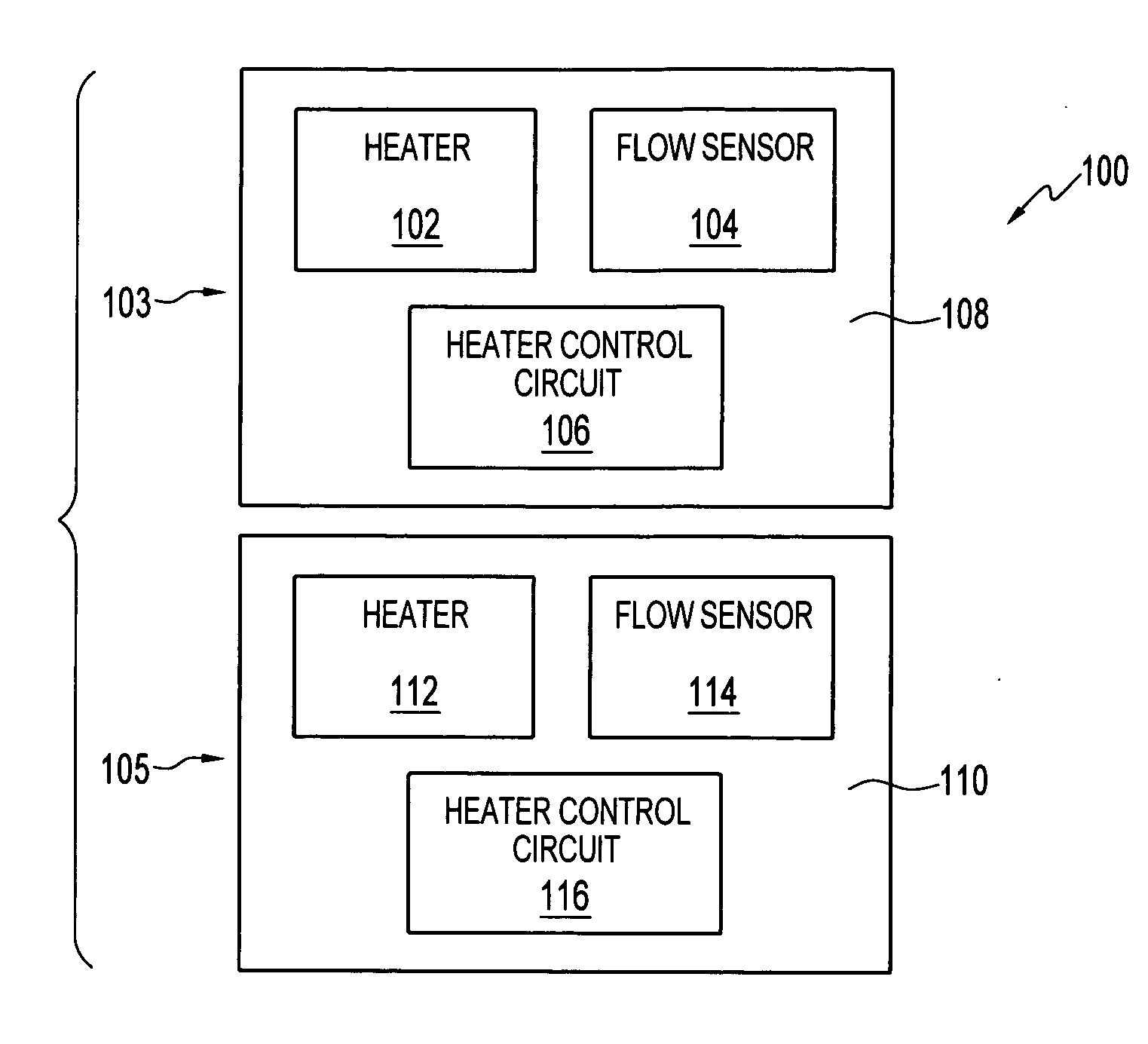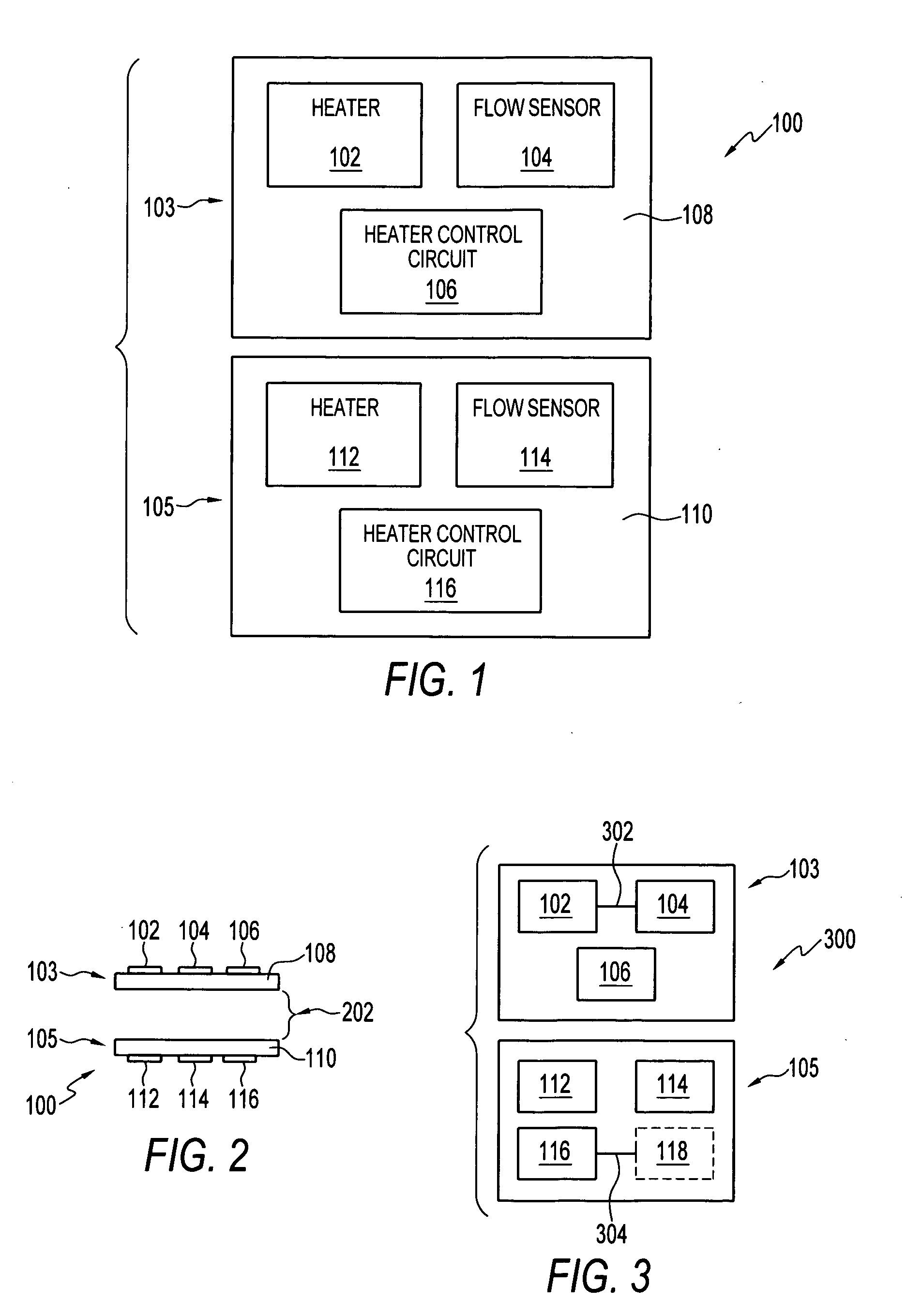Thermal isolation between heating and sensing for flow sensors
a flow sensor and thermal isolation technology, applied in the field of sensing devices and methods, can solve the problems of reducing thermal efficiency and therefore signal quality, discharging power away, and natural gas composition change, so as to reduce output distortion, response time, warm-up time, drift and nois
- Summary
- Abstract
- Description
- Claims
- Application Information
AI Technical Summary
Benefits of technology
Problems solved by technology
Method used
Image
Examples
Embodiment Construction
[0019] The particular values and configurations discussed in these non-limiting examples can be varied and are cited merely to illustrate at least one embodiment and are not intended to limit the scope thereof.
[0020]FIG. 1 illustrates a flow sensor system 100 comprising a plurality of sensor chips 103, 105, in accordance with a preferred embodiment. FIG. 2 illustrates a side view of the flow sensor system 100 depicted in FIG. 1 in accordance with a preferred embodiment. The flow sensor system 100 generally includes a plurality of flow sensor chips 103, 105, wherein each flow sensor chip 103, 105 respectively comprises a substrate 108, 110, a heater element 102, 112, a heater control circuit 106, 116, and a flow sensor component 104, 114 formed on the substrates 108, 110, wherein the heater elements 102, 112 are disposed separately from the heater control circuits 106, 116 on the substrates 108, 110. Each heater control circuit 106, 116 can be respectively thermally isolated from th...
PUM
 Login to View More
Login to View More Abstract
Description
Claims
Application Information
 Login to View More
Login to View More - R&D
- Intellectual Property
- Life Sciences
- Materials
- Tech Scout
- Unparalleled Data Quality
- Higher Quality Content
- 60% Fewer Hallucinations
Browse by: Latest US Patents, China's latest patents, Technical Efficacy Thesaurus, Application Domain, Technology Topic, Popular Technical Reports.
© 2025 PatSnap. All rights reserved.Legal|Privacy policy|Modern Slavery Act Transparency Statement|Sitemap|About US| Contact US: help@patsnap.com


